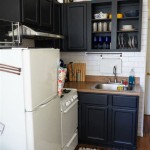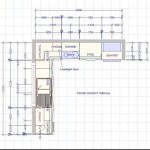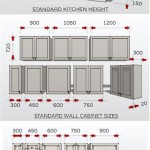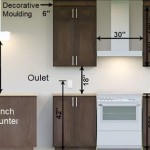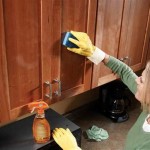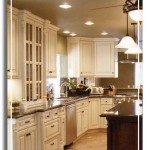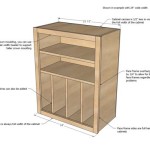Heavy Duty Contact Paper For Kitchen Cabinet Doors: A Practical Guide
Kitchen cabinet doors, frequently subjected to wear and tear, are often the first area to show signs of age and heavy use in a kitchen. Remodeling or completely replacing kitchen cabinets can be a significant and costly undertaking. Heavy-duty contact paper offers a cost-effective and relatively simple alternative for refreshing the appearance of these surfaces without incurring substantial renovation expenses. This article explores the properties, applications, and considerations associated with utilizing heavy-duty contact paper for kitchen cabinet doors.
Heavy-duty contact paper, as the name implies, is a thicker, more durable version of standard contact paper. It is typically constructed from vinyl or other robust polymeric materials, providing increased resistance to scratches, moisture, and heat compared to its thinner counterpart. This enhanced durability makes it a suitable option for high-traffic areas like kitchen cabinets, where surfaces are regularly exposed to daily use, food splatters, and cleaning agents. The adhesive backing allows for easy application, enabling homeowners to achieve a new look without the complexities and expense of traditional painting or refinishing.
The availability of heavy-duty contact paper in a wide array of colors, patterns, and textures further enhances its appeal. From solid colors that mimic painted surfaces to realistic wood grain finishes and modern geometric designs, the options are virtually limitless. This versatility allows for seamless integration with existing kitchen decor or the creation of a completely new aesthetic. Furthermore, specialized contact papers are available, including those with stain-resistant or antimicrobial properties, catering to specific needs and priorities in a kitchen environment.
Understanding the Benefits of Heavy Duty Contact Paper
The use of heavy-duty contact paper on kitchen cabinet doors provides several distinct advantages, making it a popular choice for budget-conscious homeowners and renters alike. These advantages extend beyond just aesthetics, addressing practical concerns related to cost, ease of application, and long-term maintenance.
Firstly, the cost-effectiveness of heavy-duty contact paper is a significant draw. Compared to the cost of painting, refacing, or replacing kitchen cabinets, contact paper represents a fraction of the expense. The materials themselves are relatively inexpensive, and the DIY nature of the application eliminates the need for professional labor costs. This makes it an ideal solution for individuals seeking to improve the look of their kitchen without breaking the bank.
Secondly, the application process is straightforward and requires minimal tools or expertise. Unlike painting or staining, which demands meticulous surface preparation and application techniques, contact paper can be applied with basic tools such as a utility knife, a smoothing tool (like a squeegee), and a measuring tape. The process involves cleaning the cabinet surface, measuring and cutting the contact paper to size, peeling off the backing, and carefully smoothing the paper onto the surface to eliminate air bubbles. This ease of application makes it an accessible project for individuals with varying levels of DIY experience.
Thirdly, heavy-duty contact paper offers a degree of protection to the underlying cabinet surface. It acts as a barrier against scratches, stains, and moisture, helping to preserve the original finish of the cabinets. This is particularly beneficial for renters who want to protect the property's cabinets from damage and avoid potential charges upon moving out. In addition, the contact paper can be easily removed without causing damage to the original surface, making it a temporary and reversible solution.
Finally, the ease of cleaning and maintenance is another considerable advantage. Most heavy-duty contact papers are waterproof and can be easily wiped clean with a damp cloth and mild detergent. This makes them a practical choice for kitchen environments where spills and splatters are commonplace. The durable nature of the material also ensures that it can withstand repeated cleaning without deteriorating or fading.
Key Considerations Before Applying Contact Paper
While heavy-duty contact paper offers numerous benefits, it is essential to carefully consider certain factors before proceeding with its application to kitchen cabinet doors. Addressing these considerations will ensure a successful and long-lasting result.
One crucial aspect is the surface preparation. The cabinet surface must be thoroughly cleaned and free from any dirt, grease, or loose paint. Any imperfections, such as dents or scratches, should be filled and sanded smooth before applying the contact paper. A clean, smooth surface is essential for proper adhesion and a professional-looking finish. Using a degreasing cleaner is often recommended to remove any lingering residue that might hinder the adhesive’s performance.
Another important factor is the type of contact paper selected. Not all contact papers are created equal, and choosing a product specifically designed for kitchen cabinet applications is crucial. Heavy-duty vinyl contact paper is generally the preferred option due to its durability, moisture resistance, and ease of cleaning. It is also important to consider the texture and finish of the contact paper to ensure that it complements the overall kitchen decor. Ordering samples beforehand can help visualize how the material will look in the space and assess its suitability.
The application technique also plays a significant role in the final outcome. Careful measurement and precise cutting are essential to avoid gaps or overlaps. Using a sharp utility knife and a ruler or cutting mat can help achieve clean, accurate cuts. When applying the contact paper, it is important to start at one edge and gradually smooth it onto the surface, working out any air bubbles with a smoothing tool. Patience and attention to detail are key to achieving a seamless and professional-looking finish. Watching instructional videos or reading detailed guides can provide valuable tips and techniques for successful application.
Furthermore, the long-term durability and maintenance of the contact paper should be considered. While heavy-duty contact paper is more durable than standard versions, it is not indestructible. Sharp objects and abrasive cleaners can still damage the surface. It is advisable to use non-abrasive cleaning products and avoid dragging heavy objects across the surface. Regularly wiping the cabinets with a damp cloth will help maintain their appearance and prevent the build-up of dirt and grime.
Finally, it’s important to understand that contact paper is not a permanent solution. While it can significantly improve the look of kitchen cabinets, it is not a substitute for professional refinishing or replacement. Over time, the adhesive may weaken, and the contact paper may begin to peel or bubble, especially in areas exposed to high heat or humidity. When this occurs, the contact paper will need to be replaced. Therefore, it is important to view heavy-duty contact paper as a temporary and cost-effective solution for refreshing the appearance of kitchen cabinets.
Selecting the Right Heavy Duty Contact Paper
The selection of heavy-duty contact paper requires careful consideration of several factors to ensure that the chosen product meets specific needs and achieves the desired aesthetic outcome. Focusing solely on price can be a pitfall, as lower-cost options may compromise on quality and durability. A more holistic approach, factoring in material composition, adhesive properties, and design elements, is crucial for a successful project.
The material composition is a primary determinant of the contact paper's durability and performance. Vinyl is a popular choice due to its inherent resistance to moisture, stains, and heat. Higher-grade vinyl contact papers offer enhanced durability and are less prone to tearing or scratching. Other materials, such as polymeric films, may offer different properties, such as increased flexibility or enhanced adhesion. It is essential to research the specific properties of each material type to determine which is best suited for the kitchen environment.
The adhesive quality is another critical factor. A strong, reliable adhesive is essential to ensure that the contact paper adheres securely to the cabinet surface and remains in place over time. Some contact papers feature repositionable adhesives, which allow for easier adjustment during application. However, it is important to ensure that the adhesive is strong enough to maintain a long-term bond, even in areas exposed to heat or moisture. Reading reviews and seeking recommendations from other users can provide valuable insights into the adhesive performance of different contact paper products.
The design and aesthetic appeal of the contact paper are also essential considerations. The wide array of colors, patterns, and textures available allows for customization to match existing kitchen decor or create a completely new look. Solid colors can provide a clean, modern aesthetic, while wood grain finishes can add warmth and character. Textured contact papers can create a more tactile and visually interesting surface. It is important to consider the overall style of the kitchen and choose a contact paper design that complements the existing elements. Utilizing online visualization tools or ordering samples can help make informed decisions.
Specialized features, such as stain resistance and antimicrobial properties, can further enhance the suitability of heavy-duty contact paper for kitchen applications. Stain-resistant contact papers can repel food spills and grease, making them easier to clean and maintain. Antimicrobial contact papers can inhibit the growth of bacteria and mold, creating a more hygienic kitchen environment. These specialized features are particularly beneficial in high-traffic areas and for individuals with specific health concerns.
Finally, the ease of application and maintenance should be considered. Contact papers that are easy to cut, apply, and clean will simplify the installation process and ensure long-term satisfaction. Choosing a contact paper with a smooth surface and a non-porous finish will facilitate cleaning and prevent the build-up of dirt and grime. Reading reviews and seeking recommendations from other users can provide valuable insights into the ease of application and maintenance of different contact paper products.
Step-by-Step Application Guide for Contact Paper
Applying heavy-duty contact paper to kitchen cabinet doors is a relatively simple process, but attention to detail and proper technique are crucial for achieving a professional-looking result. Following a step-by-step guide can help ensure a smooth and successful application.
The first step is to thoroughly clean the cabinet doors. Remove any hardware, such as knobs and handles, and use a degreasing cleaner to remove any dirt, grease, or grime from the surface. Rinse the surface with clean water and allow it to dry completely. If the cabinet doors have any imperfections, such as dents or scratches, fill them with wood filler and sand them smooth. A clean, smooth surface is essential for proper adhesion.
Next, measure the cabinet doors accurately. Use a measuring tape to determine the length and width of each door, and add a few extra inches to each dimension to allow for trimming. Transfer the measurements to the contact paper and use a sharp utility knife and a ruler or cutting mat to cut the paper to size. Precision in cutting is crucial to avoid gaps or overlaps.
Peel off a small portion of the backing paper from the contact paper, starting at one corner. Position the contact paper on the cabinet door, aligning it carefully with the edges. Use a smoothing tool, such as a squeegee, to gently press the contact paper onto the surface, working from the center outwards. This will help to eliminate air bubbles and ensure a smooth, even application.
Gradually peel off more of the backing paper, continuing to smooth the contact paper onto the surface. If any air bubbles appear, use the smoothing tool to gently push them towards the edges. If the air bubbles are persistent, use a pin to prick them and release the air. Take your time and work methodically to avoid wrinkles or creases.
Once the entire surface is covered, use a utility knife to trim off any excess contact paper around the edges of the cabinet door. Use a straight edge to guide the knife and ensure clean, precise cuts. Reinstall the hardware, such as knobs and handles, and inspect the finished surface for any imperfections. If necessary, use a small piece of contact paper to patch any areas that are damaged or not fully covered.
Repeat the process for all of the cabinet doors, taking care to maintain consistency and attention to detail. Once all of the doors are covered, step back and admire the refreshed look of your kitchen cabinets. Regular cleaning and maintenance will help to preserve the appearance of the contact paper and ensure its longevity.

Black Marble Commercial Grade Contact Paper Self Adhesive Removable 23 50 X 16 Ft Com

Kitchen Remodel Project Diy Cabinet Update With Wrapping Paper Tatertots And Jello

Spruce Up The Outside Of Your Kitchen Cabinets With Contact Paper Offbeat Home Life

The Best Contact Paper For Kitchen Cabinets Hunker

How To Paint Kitchen Cabinets In 7 Simple Steps

D C Fix 26 In X 78 Marble White Self Adhesive Vinyl For Countertops Cabinets And Other Furniture Items Fa3468031 The Home Depot

How To Update Cabinets With Contact Paper The Handyman S Daughter

30 Kitchen Cabinet Add Ons You Can Diy Family Handyman

Electriduct Wood Grain Contact Paper
Related Posts

